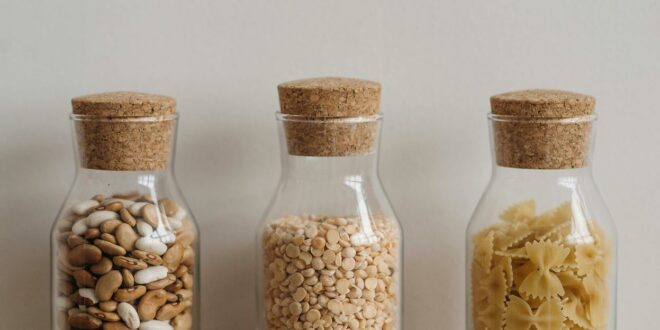Note: the following is not intended as professional advice. If you are concerned about your diet, consult your medical professionals.
Hi, I’m Helen, and in this second instalment of ‘I’m a Carboholic’ (someone who is addicted to refined and ultra-refined carbohydrates), we’ll be discussing exactly what carbohydrates are, and why we all need them in our diet.
Along with protein and fat, carbohydrates are essential for providing the nutrients that keep us alive. They keep our brains functioning, control the ups and downs of energy-giving sugars circulating in our blood, and are our body’s major source of fuel. This is why cutting back on carbohydrates can make us feel miserable, as anyone who’s a dieter knows!
Carbohydrates are broadly divided into three categories: sugars, starches, and fibres. Sugars are found naturally in dairy foods, fruits, and vegetables. But we can also add sugars to our diet in the form of sugar crystals, honey, glucose, and syrups (such as those made from coconut, corn, rice, and agave). We’re most familiar with starches in foods such as grains (rice, wheat, rye, and barley, for example), and legumes (such as beans, chickpeas, and lentils). Starches are also found in ‘comfort’ vegetables such as potatoes, kumara, and corn.
Fibres, the third kind of carb, are in a category all of their own. That’s because, depending on what kind of fibre they are, they’re either tricky, or impossible, to digest. The ‘tricky’ kind (called ‘soluble fibres’) are usually found inside a plant (the flesh of an apple for example), while the indigestible sort (called ‘insoluble fibre’) is usually found on the outside of a plant (the skin of a potato, for example, or the bran on the outside of a grain of wheat).
You might think eating semi-digestible or indigestible food is a waste of time, not to mention, money! After all, fibre actually takes energy to digest. Even when the soluble kind is digested, it only pays us back with a tiny amount of energy (in the form of calories). Insoluble fibre passes right through our body, and gives back no energy on the way. Surely, if we want the most bang for our buck (and who doesn’t, these days), we should stick to eating carbohydrates from which we can at least get some calorific value?
If that’s your feeling, you might naturally want to head for what are known as refined foods (RF). They will have had most or all of their insoluble fibre removed, so you can count on getting a good energy-return for your dollar. You might even want to choose only ultra-refined foods (URF) which can pretty much guarantee contains virtually no fibre (even more value for money). Before do this, here’s something everyone who feels constantly hungry most of the time (or more often than they want to), will want to hear: fibre is your best friend! It really is. It keeps us feeling full for much longer and, as it does so, it also gives our health a huge boost.
In part #3 of ‘I’m a Carboholic,’ we’ll take a look at just how fibre achieves these remarkable results, and how refined and ultra-refined foods do exactly the opposite. We’ll also look at why we’re naturally drawn to foods containing little or no fibre, and why some of us, on the carboholic spectrum, can’t resist them without help.
In the meantime, unless your medical professional advises otherwise, experiment this week with keeping yourself feeling satiated (full) for longer. Start by not peeling your potato or apple, by eating brown rice instead of white (soak it before cooking, and it will be nice and soft), and by eating an orange instead of drinking a glass of fruit juice.
Your body will love you for it!










Join the Discussion
Type out your comment here:
You must be logged in to post a comment.